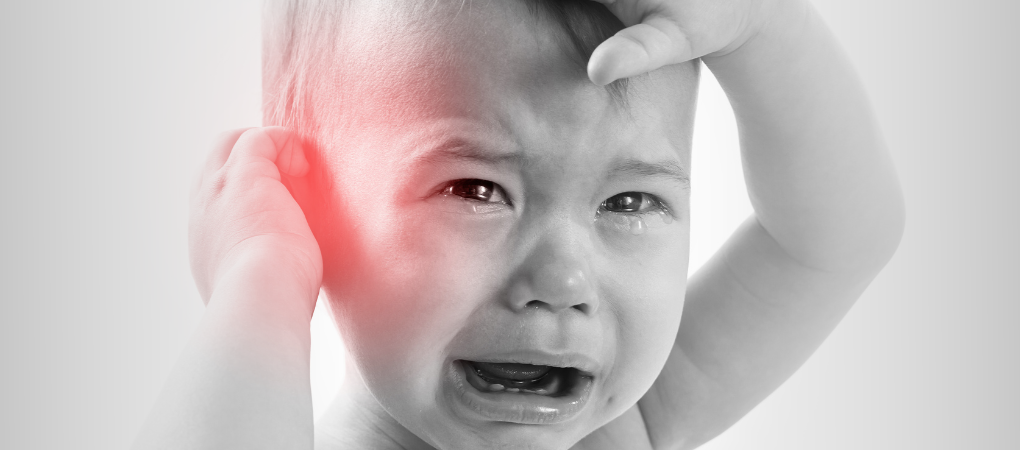Francesca Galiano
|
02/09/2022 - Last update 29/12/2022
Karen M Steele, Jane E Carreiro, Judith Haug Viola, Josephine A Conte, Lance C Ridpath | Year 2014
Effect of osteopathic manipulative treatment on middle ear effusion following acute otitis media in young children
Pathology:
Otitis media
Type of study:
Pilot randomized controlled trial
Date of publication of the study’:
2014/Jun/01

Purpose of the study
- Objective: to evaluate the effects of OMT on middle ear effusion following acute otitis media in children
- Measured outcomes:
- Primary: reduction of the duration of the effusion in the middle ear in the month following an episode of acute otitis media
- Secondary: improvement of the hearing through tympanometry and acoustic reflectometry
Participants
- Number: 50 children (21 female and 29 male)
- Criteria of inclusion: age between 6 months and 2 years, diagnosis of acute otitis media according to the criteria of the American Academy of Pediatrics of 2004 over the past 3 days, altered tympanogram. It had to be the first episode of acute otitis media or at least 4 weeks had to have elapsed since the completion of the course of antibiotics taken to cure the last episode
- Criteria of exclusion: chromosomal abnormalities, major congenital malformations of the head and neck (including congenital torticollis), immunologic abnormalities or deficiencies, any prior ear, nose or throat surgical procedure for otitis media, normal tympanogram in both ears (in the case of only one normal tympanogram, only altered tympanogram data were taken)
- Groups of study: two groups obtained by randomization
- Group 1: standard care with the addition of OMT, 26 children (10 female and 16 male, mean age 11.8 months)
- 38 tympanograms and 30 acoustic reflectometry analyses
- Group 2: standard care, 24 children (11 female and 13 male, mean age 12.4 months)
- 38 tympanograms and 31 acoustic reflectometry analyses
- Group 1: standard care with the addition of OMT, 26 children (10 female and 16 male, mean age 11.8 months)
Interventions and evaluations
- Evaluation of the hearing through tympanometer and acoustic reflectometer at the time of recruiting and then every week
- an acoustic reflectometer was given to each family to make daily evaluations
- in the group with OMT, the measurements were also taken immediately after each treatment session
- Evaluation of a questionnaire on the state of the child first at the time of recruitment and then every week: sleep, over-the-counter medications used, parents’ level of comfort in using the reflectometer, unusual behaviors
- 3 weekly sessions of OMT
- OMT: standardized protocol based on nine techniques
- sacroiliac treatment using ligamentous tension balancing
- thoracolumbar and diaphragmatic treatment using myofascial release
- rib cage treatment using ligamentous tension balancing and myofascial release
- cervico-thoracic area (thoracic inlet) treatment using myofascial release
- cervical region treatment using ligamentous tension balancing
- cranio-cervical junction treatment using suboccipital inhibition
- venous sinus drainage technique
- occipital decompression technique
- sphenobasilar symphysis decompression technique
- Standard of care: according to the current guidelines
- Specific osteopathic physicians, physicians and nurses were recruited and trained
- Osteopaths were trained by the authors of the study
Results
- Primary outcomes: the group with OMT showed a resolution rate of the middle ear effusion greater than the group with standard care only (68,4% vs 42.1%) in a statistically significant manner.
- Secondary outcomesthe tympanogram showed, with statistical significance, a greater probability of solving the middle ear effusion in the OMT group (odds ratio of 2.98, that is, a probability almost 3 times greater than the other group) after 1 week (2 sessions of OMT). The analysis of the data obtained with acoustic reflectometer also showed, in a statistically significant way, a favorable result for the group with OMT (after 2 weeks, that is, 3 sessions of OMT).
No “instantaneous” post-OMT improvements of the hearing seem to have occurred according to the measurements carried out with tympanometer or acoustic reflectometer.
Discussion
In addition to standard care, OMT is able to help resolve the middle ear effusion following an acute episode of otitis media, thus preventing adverse effects of hearing loss, which can be both short-term (behavioral changes) and potentially long-term in case they occur during language development.
However, studies with more children are needed, also introducing both a sham treatment to compare to OMT and more robust measurements related to the quality of life of the children.
The review of Osteopedia
By Marco Chiera
Strengths: thorough description of the techniques used to allow their reproduction; pre-study training of the operators; thorough description of the analysis of the collected data.
Limits: standard care was not evaluated (although all operators confirmed their adherence to the guidelines, safety is never too much); small sample and many data excluded from the analysis because of low quality; no data from the questionnaire on the state of the children were reported; a better graphic representation of the children allocation and of the measurements obtained from the ears would have been useful.

Are you an osteopath?
Register and enjoy the membership benefits. Create your public profile and publish your studies. It's free!
Register now
School or training institution?
Register and enjoy the membership benefits. Create your public profile and publish your studies. It's free!
Register now
Do you want to become an osteopath? Are you a student?
Register and enjoy the membership benefits. Create your public profile and publish your studies. It's free!
Register now







